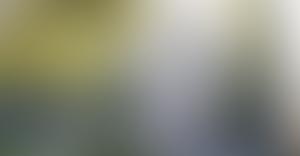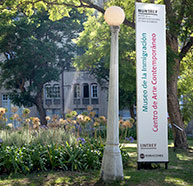-
Piedra rima con hiedra, mármol rima con árbol


-
Piedra rima con hiedra, mármol rima con árbol


-
Piedra rima con hiedra, mármol rima con árbol
Piedra rima con hiedra, mármol rima con árbol
From March 26th to April 24th
Rakel Gómez Vázquez
Programme for the Internationalization of Basque Contemporary Art EAS-EZE 2022
BITAMINE FAKTORIA is a cultural creation and production factory established in the Basque Country aimed at the promotion and internationalization of culture, design, and contemporary art. It is a cross-border space for the development of innovative, creative, and experimental interdisciplinary projects.
Since 2015, the EAS-EZE internationalization programme has selected artistic projects to be developed over several months in the Basque Country with a view to presenting them as part of the art scene of the city of Buenos Aires.
The objectives of this annual call are to encourage artistic research and production, to contribute to the promotion of creators, and to foster the international exchange of artists based in the Basque Country.
-
CURATORIAL TEXT
Taking as a starting point the replacement of the statue of Christopher Columbus in Buenos Aires with that of Juana Azurduy and the future extinction of the Spanish palm trees due to the invasion of the red palm weevil, I attempt to revisit both facts as interrelated and symptomatic of the effects of the Capitalocene.
These two symbolically colonial and monumental events simultaneously experience occurrences that allow for a visual ecocritical exercise. Based on the connection between the appearance of an invasive species in a living colonial symbol and the dismantling of monuments as part of a decolonization policy, the objective is to show how nature and society are interconnected and to reflect in terms of political ecology through images that reveal the history of our time.
In my opinion, the infestation that will destroy the specimens planted to commemorate those who had made it (made it in the Americas) is an iconoclastic act of decolonization, for this infestation is paradoxically the result of colonial policies of extractivism. While plants have always migrated, we know that our influence has expedited their dispersal and now also their disease. As Latour rightly says, cultures used to shape the earth symbolically and now they do so in reality. An insect, from southeast Asia, is listed as an invasive species. Forced to migrate after deforesting its original forests, it arrives at the time of the real estate boom in the Spanish Levant and continues its journey until it now reaches the palm trees planted by the Spaniards on the northern fringe.
This work, which has a social ecologist focus, thus associates the environmental crisis with the social injustice of colonialism, considering the prevalence of symbols in the landscape and their response to the continuities of capitalism. By exploring the connection between forced migrations – of humans and non-humans – at different historical moments and analyzing the landscape as a cultural construction that portrays our memory and identity, my work delves into ecological and social-political issues and the new challenges posed to the preservation of memory, culture and identity.
I draw on artistic practice and art research to carry out an exercise in visual ecocriticism that allows for a multi-species speculative (historical) memory. Art, as a vehicle for empathy, allows me to make a necessary and urgent paradigm shift under the circumstances of a wounded planet. I believe that approaching this research through artistic practice favours this change of paradigm, as it encourages the observation of the narrative of monuments, including living and symbolically colonial organisms, and thus makes it possible to engage in a multi-species memory exercise, thereby creating a narrative that empathizes with the environment and invites us, as Donna Haraway proposes, to reconfigure our relationship with the earth and its inhabitants. The visual archive gathered provides the material for a plastic investigation using cyanotype, an analogue photography technique related to the project in two ways: historically, as it is a nineteenth-century technique from the time of the Spanish migratory movement, and symbolically, through its intense ultramarine blue colour, to migratory and commercial processes.
Through my work on monuments and biological plagues, I attempt to find strategies to render the contemporary visual and symbolic construction visible. Maps, diagrams, documents, routes, and botanical studies represent the complex design of a non-linear and multi-species narrative that gives rise to a reinterpretation of the decolonial policy on a monument and the invasive plague that affects Spanish palm trees.
Rakel Gómez Vázquez
-
THE RECTOR'S TEXT
This year marks the twentieth anniversary of MUNTREF. Since April 2002, the UNTREF campus in Caseros has been the home of the first art museum with its own collection in Greater Buenos Aires. Our halls have hosted a wide array of diverse and rich exhibitions in terms of their impact on the community as well as on the research activities involved in them.
They range from the anthologies of Antonio Berni to Pablo Picasso and Joaquín Torres García, from Gertrudis Chale to Marcia Schvartz, from the Grupo Espartaco to the Ojo del Río; from the conceptual explorations of David Lamelas to those of Alejandro Puente; from Quinquela Martín to Luis Seoane, Yuyo Noé, Alberto Heredia and Carlos Gorriarena, among many others. The electronic arts, which represent a distinctive academic development at UNTREF, had an early and privileged space in its halls with the curatorship and outstanding participation of Graciela Taquini – primus inter pares. They have also afforded a place to artists and curators whose formation takes place at our university.
In 2010, MUNTREF began to expand with the opening of its Art and Science Centre, a laboratory museum located in Tecnópolis. In 2012, with the Boltanski Buenos Aires multisite project, we set foot on the premises of the former Immigrants’ Hotel, where we have since developed the Museum of Immigration and the Contemporary Art Centre for cultural diversity. In 2017 we created the Centre for Art and Nature, a space for the promotion of environmental awareness.
Numerous exhibitions have been successively held. Artists and curators from Argentina and abroad have shown their work in this space, such as artists Graciela Sacco, Carlota Beltrame, Maria Lai, Anna Bella Geiger, Leila Alaoui, Natacha Nisic, Marina De Caro, Vik Muniz, Leandro Erlich, Bernardí Roig, Ali Kazma; and research curators Georges Didi-Huberman, Estrella de Diego and Marta Gili, to mention just a few.
The Electronic Arts Prize, the Braque Prize, BITAMINE, the BIM (Biennial of the Moving Image) and BIENALSUR are also part of our programme, which is supported by the Embassies of France, Spain and Italy, among the most usual ones, as well as by funds such as Mecenazgo, Italian Council, Pro Helvetia and others.
This list reflects the intense work we carry out to position MUNTREF as a catalyst for curatorial, research and social projects at the same time.
We began 2022 with a strong programme focused on ecofeminism in the exhibition by Sarina Scheidegger and Jimena Croceri curated by Lucrecia Palacios; migration and border issues in the collective project curated by Alex Brahim, Benedetta Casini and Diana Wechsler; the BITAMINE residency carried out with the Basque Country, and the enquiry into the role of time and the imaginary in Hugo Aveta’s immersive installation. This is the starting point at the Immigrants’ Hotel de Inmigrantes of the work to be developed throughout this anniversary year. For twenty years we have been committed to making these art spaces accessible to the community.
Finally, I wish to express my gratitude to our university’s collaborators, professors, and students, who in different ways participate in the development of this project, and to Diana Wechsler, our artistic director, who since 2009 has contributed her vital creativity to MUNTREF.
Aníbal Y. Jozami
UNTREF Rector
MUNTREF General Director -
LIST OF WORKS
RAKEL GÓMEZ VAZQUEZ (Basque Country)
Living Monuments and Biological Plagues Series. Cartographies for the history of our time, 2021. Cyanotype on paper. 70 x 100 cm
Living Monuments and Biological Plagues Series. Cartographies for the history of our time, 2021. Cyanotype on paper . 70 x 100 cm
Hiltzeko Zorian Series. Disappearance, 2021. Photographic print. 112 x 84 cm
Visual practice of dismantling monuments and plagues, 2021. Photographic print. 29.7 x 42 cm
Symptomatic, 2019. Cyanotype on textile and glass. 17.6 x 14 x 5 cmVisual practice of dismantling monuments and plagues, 2020. Photoengraving. 58.5 x 45.5 cm
Missing stories, 2020. Cyanotype on glass. 12 x 17 x 5 cm. Augur
Jauna Series, 2022. Photographic print on paper. 42 x 29,7 cm
Venue
Center of Contemporary Art







